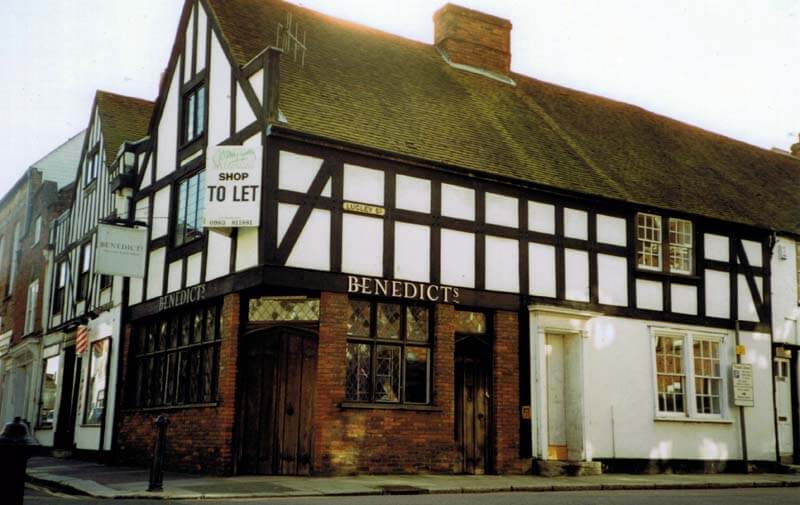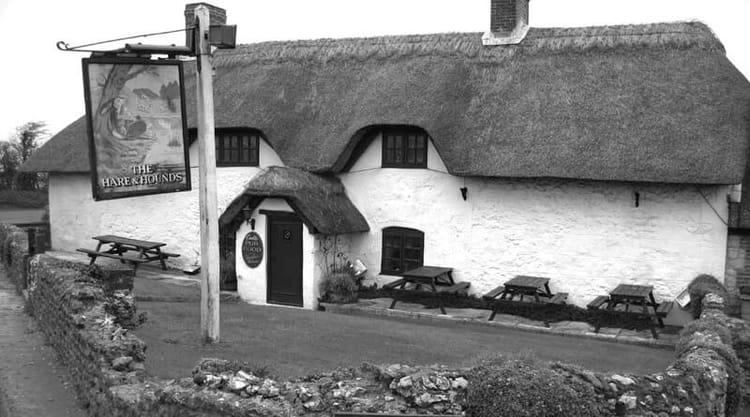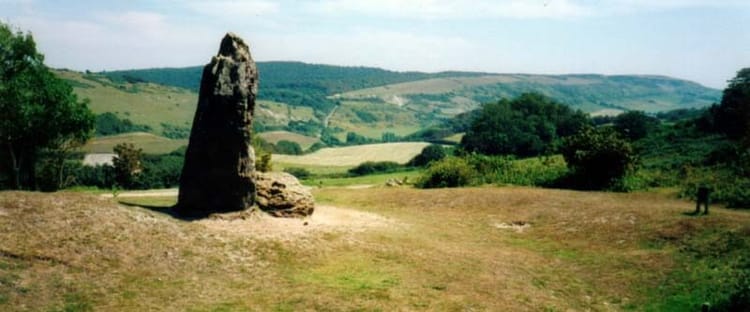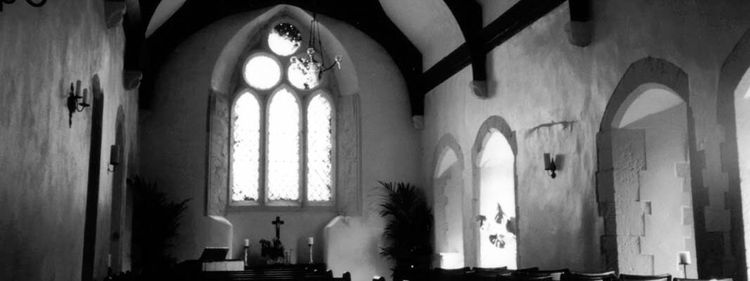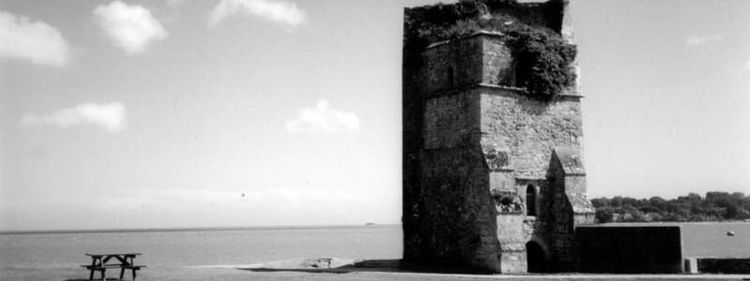St. Mary's, Brading. Unsolved Mysteries Isle of Wight

The Isle of Wight's Oldest Town
Notable local noble Sir John Oglander said his home town Brading probably was the Isle of Wight's first major settlement. Today it certainly is a top must-visit town on the mystery, history and haunting tour of the Isle of Wight.
Curiously, the truly momentous history of Brading is not immediately apparent to visitors, nor the clever medieval engineering work carried out upon the church spire during the AD 1200s whereby an outward curve was deliberately created to offset a look of concavity.
Across the road, the white and black-timbered Old Rectory. Part of the cluster of historic buildings at the core of this community; and among the Isle of Wight's most notoriously haunted buildings.
In the Old Rectory mansion a dark and deadly scene-of-crime stains an upstairs room. Haunted by a shadow figure who glides through the walls.
Some say it is the ghost of an unlucky customer whose skeleton was found beneath the floorboards. A ghost-hunter dare is to last a night without running for the door.
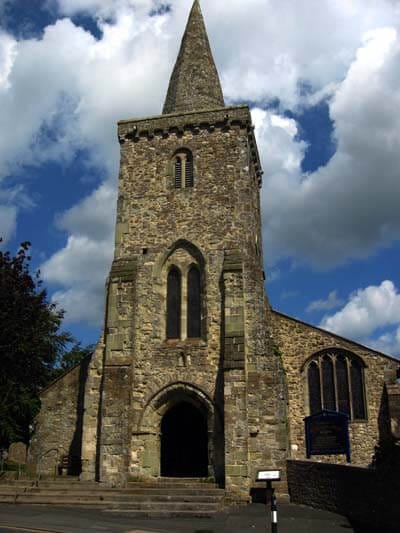
Exploring the haunted Isle of Wight
The Dragon's Back
The name 'Brading' according to Wight historian Mills is among the most ancient on the Isle of Wight and means: (The settlement of) dwellers on the hillside', though no one knows how far back into pre-history the settlement was founded.
This is the eastern end of the dramatic-named Dragon's Back, a chalk-spine which runs across the Island. Here when Britain and continental Europe were joined, when Ice Age glaciers advanced and retreated and ridges were quite literally the high-ways above the wolves and marshes.
Most of that route has long since fallen into the sea, except the Island section from once-connected Sussex, Culver Cliff to the Needles Rocks (which originally carried on into Dorset, joining Portland).
Archaeological finds in nearby Priory Bay date from the Paleolithic period and flint-working sites were found in this area.
A Short History of Brading Quay
In his reflective notebook, neighbourhood noble Sir John Oglander noted in the 1600s how Brading was '...ye only towne for receypt of strangors that came by shippinge.' Friends and enemies, both.
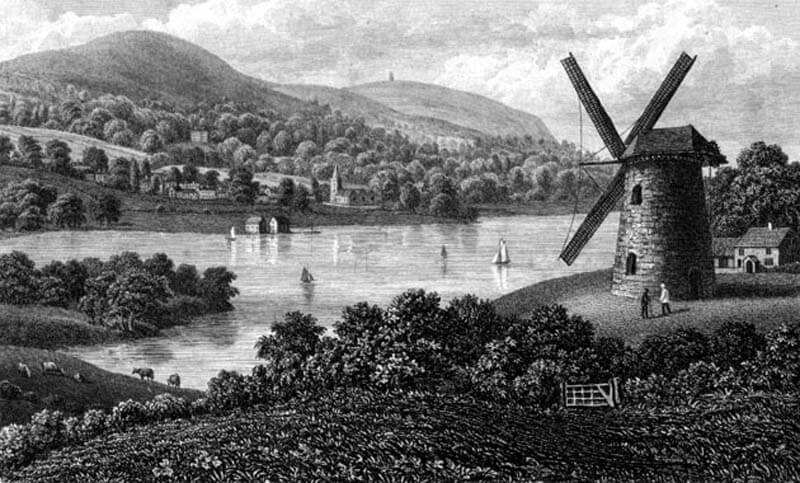
Island legend retro-sites Brading as the place where in AD 704 Saint Wilfrid stepped ashore to baptise the last British unbelievers and established the first church on the Isle of Wight.
Recent archaeological finds in this area suggest outlaw warlord Caedwalla's forces in support attacked the island at this ancient port.
Long before, in AD 43, Titus Flavius Vespasian, future Emperor of Rome at the head of the Second Legion arrived in Brading quay.
Some say the magnificent Roman villa uncovered in nearby Morton was his, but others doubt this since he died in AD 79 and the villa is dated to the AD 200s.
However this villa probably belonged to a bigger celebrity than Vespasian. An emperor who recognised both of Brading's holy Virgins.
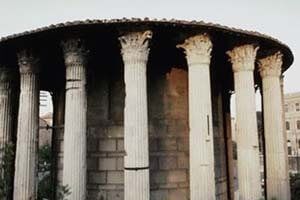
Vectis' First Virgin
In every new colony, Roman settlers first established a shrine to their goddess Vesta, patron deity of the sacred flame of the hearth.
It is possible Saint Mary's stands on what once was a Roman temple. In many historic communities, old pagan shrines and sanctuaries were repurposed; their precious materials of building stone washed and blessed with holy water.
The famous Vestal Virgins were founded in Rome to tend her sacred flame, symbolic of the flame of life Vesta kept alight in every human heart. In every human community.
For over a thousand years the Vestal's responsibility was to keep the sacred flame alight, never to let it falter. For if that happened Romans believed catastrophe would follow.
Vestals led the festivities for Virgin Vesta and witness accounts record this holiday as immensely popular. Vesta's statue carried in procession through the streets of every capital, even here on the Isle of Wight when the Romans named it Vectis.
Emperor Constantine accepted the arrival of a new virgin from the Middle East, promoted by devotees of Christianity; and for a while Rome recognised two holy virgins, until an obvious competition problem arose in the streets every year.
To solve this, in AD 380 Byzantine emperor of Rome Theodosius the Great abolished all worship of Vesta throughout his new exclusively-Christian empire. He also ordered an end to the Olympic Games.
Both ancient flames were extinguished.
Rome fell soon after. The so-called Dark Ages followed.
More Than Just Brading's Holy Virgin is Missing
AD 497 the legions fled Brading as the empire foundered. No one knows what incoming pagan Saxon warlords Cyrdic and Cynric did with Brading's Mary statues.
Maybe she was kindly treated, given membership among their own goddesses and gods for a while.
In 697 Wilfrid and Caedwalla at last fully welcomed the Isle of Wight inhabitants into the Christian community, but some Brading folk still wonder why it took so long for their holy Virgin to return.
For she is not the only 'What's missing?' mystery in Brading.
The church isn't in the Domesday Book, the property inventory survey ordered by William the Conqueror during the 11th century. The oldest town on the Isle of Wight should have possessed a church.
Some nights when detectorists gather in the cosy Bugle Inn to compare muddy finds and soothe disappointments, an impasse is met. "Oversight," say the glass-half-fullers over Brading's missing church.
"No chance," reply the half emptyers. "Domesday's meanness missed nothing."
There should have been a church here in Brading, but there wasn't.
The Mystery of the Missing Virgin
Local detectorists believe the statue of the Virgin Mary that stood above the church doorway most likely was cast away and lost when king Henry VIII ordered all graven images removed as idolatrous, back in 1539.
And introduced his new laws and punishments for the poor and needy in the community since he closed Quarr Abbey. The public stocks remain to this day in the arched building outside the church door.
Some optimists believe the Virgin's statue may be someplace still out there somewhere in the old Haven fields. She will turn up some day like the many Roman fragments from Brading's deeper past.
Thank you for your company on this short tour of Isle of Wight mysteries and haunting. If you would like to know more about Margo Williams' investigations in Brading and other matters of hell and heaven, read this book. Now available from Amazon.

